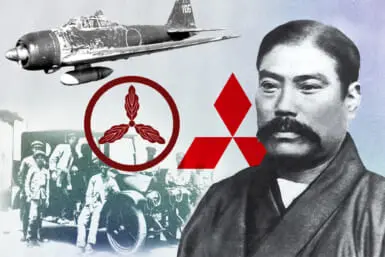by Yurie Horiguchi
It seems to me that Kinro-Kansha-no-Hi, the national holiday that falls on Nov. 23, is something invented by Japanese authorities during the Occupation days, at the instigation of Americans who could not conceive of the absence of a Thanksgiving Day toward the end of November.
It is definitely a post-war innovation, but it hasn’t really taken, the way Thanksgiving Day is observed in the U.S. and Canada. People don’t go whole-hog— oops! — whole-turkey and stuffing and pumpkin pie.
Which reminds me that the first time a Japanese friend was confronted with pumpkin pie, her hostess made the mistake of telling her what it was. As Gertrude Stein almost said: a pumpkin is a pumpkin. And a pumpkin is a very dull vegetable indeed.
My friend gave a gentle upheaval of the bosom. She then delicately nibbled at the pastry crust. Then she daintily scooped up the whipped cream, and with a big smile declared the pie to he delicious.
This, in a sense, is on a par with a foreigner being confronted with raw squid for the first time. But he is generally much less polite.
But to get back to our so-called “thanksgiving,” it is not a day on which whole families congregate to stuff themselves in memory of all the good things they stole from the natives way back when.
The whole idea of a harvest festival started centuries ago, as in many European countries. But each farming region celebrates its successful crops at a different period of the month – usually in October.
Nov. 23 is “the day when rice and other crops are harvested,” says a certain misguided authority. Nonsense!
Up in Niigata province, where we have a small property, the farmers finished their harvesting over a month ago. The land is now under 20 centimeters of snow and the shucked rice is neatly packed into poly-vinyl bags in their warehouses. They celebrated their harvest and hamlet festival on Nov. 3.
The authority goes on to say, “The day is designed to instill a sense of gratitude in workers for the fruits of their labor…” One cannot take exception to that. With the government paying huge subsidies for rice, even though there is now a surplus in the country, the consumer has to pay through the nose for each precious grain.
Farmers therefore can sit back and enjoy their profits while eating the fruits of their labor at no cost whatsoever, which is certainly a matter for thanksgiving.
Let’s go back to pre-war days when the festival was called Niinamesai or Kannamesai.
In Japan, the lunar calendar formed the basis of determining the timing and date of festivals, and regulated the lives of the Japanese people before the Meiji Restoration of 1868.
Farmers, for their part, have conceived and observed rites and festivals of their own since ancient times, and the Harvest Festival, as It was then called, was celebrated on Oct. 17 before the post-war era added new and arbitrary holidays to the national calendar, removing others at the same time.
The festival celebrating the end of harvesting was generally held after the actual field work was over, and came to be tied in with the local uji-gami, or village god, festival.
The Japanese harvest thanksgiving has a far more spiritual connotation than the American or Canadian equivalent.
For example, on or about Oct. 10. a special rite was held when scarecrows were removed from fields. At the same time, this was a signal for the gods who were guarding the fields (inside the scarecrows?) to fly off for a well-deserved rest.
It was believed that the gods all assembled in Izumo in the month of November, which then came to be called the Kanna-zuki, or godless month.
As soon as all the crops were in, however, the deity hitherto known as ta-no-kami, or field god, returned to take up its dwelling in the mountains, becoming yama-no-kami or mountain god. There it remained until the spring.
The yama-no-kami is generally believed to be a female deity, although she switches back to being a male to guard the fields through spring into autumn.
The hierarchy, where gods are concerned, is quite a complicated matter and I understand that scholarly people are still working on trying to sort it out.
The yama-no-kami is believed to be the deity of the products of both mountains and fields, as well as of the sea. It is also the deity of each individual farming household.
As a female deity, she is said to have a fierce temper and thunderous anger, and shrewish housewives are sometimes referred to as yama-no-kami.
In some districts it is believed that she gives birth to 12 children annually, and probably because of that, she heartily loathes the number 12. If a house or hut in a hamlet is numbered “12” it is certain that some calamity will occur there.
Her messengers are wolves, snakes and monkeys, and it is considered very unlucky to kill any one of them during the winter months.
As I said earlier, when the winter snows and cold come to an end, yama-no-kami returns to the fields to become the mild and benevolent ta-no-kami — variety being the spice of life.
A little before the actual harvest, a small portion of the crop is cut. with the first ears of the rice harvest offered to the gods, while another portion of the same rice is cooked and partaken of by the farmers.
This rite is still observed at the Ise Shrine (formerly on Oct. 17), and now that Nov. 23 has become the national “Thanksgiving Day,” a similar rite is held at the Imperial Palace sanctuary, in the presence of the Emperor and the imperial family.
A far cry from stuffed turkey and pumpkin pie!








